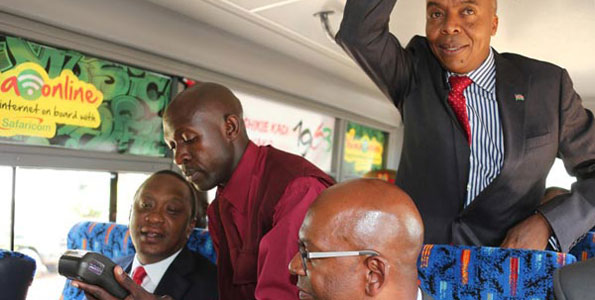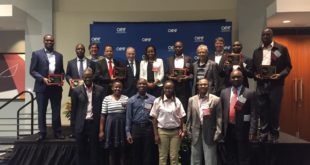Nakuru has in the last three months recorded a faster adoption rate of the cashlite fare system, 1963, than Nairobi, with 16 of the county’s SACCOs converting to the cashlite payment system, running some 700 vehicles, which are now predominantly on the 1963 system.
Named the fastest growing town in Africa by the United Nations, Nakuru is rivaling Nairobi’s development agenda with the speed and aggressiveness at which it is embracing new technology, most recently emerging as the first Kenyan town to offer residents free street Wi-Fi.
The town has also now pulling ahead in seeing SACCOs push harder than elsewhere to adopt the cashlite system, in a drive that has been spearheaded across the county by 3NTO, Bahama, Naloki, Phase Two Sacco, and Highway Travellers. These SACCOs commonly ply routes to Nairobi, Nakuru, Naivasha, and Lanet, as well as within Nakuru County itself.
The early and aggressive lead of the long distance SACCOs in adopting the cashlite system has seen more than ten other SACCOs follow suit in a matter of weeks in seeking the rapid installation of 1963 systems, as matatu owners move to streamline the revenue collection from their vehicles.
“After identifying the yawning gap for a cashless fare system in the region, we met with Nakuru matatu SACCOs in December and enlightened them about the cashless fare system and the role it plays in improving their business. The uptake, however, began much later, but has since been far more rapid than in Nairobi,” said Mwakio Ngale, 1963 General Manager.
With approximately 10,000 registered cards in the county, the switch to the cashlite system in Nakuru is being driven mainly by the matatu owners and SACCOs. 3NTO SACCO, for instance, sought out the 1963 team to register for the cashless system, and is currently actively enlightening passengers on the benefits and the usage of the card. The SACCO has 30 of its matatus using principally the 1963 card.
“Registered SACCOs now have an upper hand in attracting investors in the matatu industry and it has simplified procurement process for those interested in purchasing new vehicles. Apart from just getting your money in real time, the technology has enabled us to know the status of matatus at all times and guarantee fair and decent terms to both operators and passengers,” said Lucas Gachiri, Manager 3NTO SACCO.
To aide consumer education in Nakuru, 1963 is additionally employing two in five people in the registered SACCOs to act as activators, providing training for both consumers and matatu staff, thus ensuring faster uptake.
“Although the number of registered cards in Nakuru County is still lower than Nairobi, due to the wide population gap, there is consistency in how people are using the card and the uptake is now faster compared to Nairobi,” said Mwakio Ngale.
“We have also noted that the youth account for 75 per cent of registered 1963 card users, comprising mainly of students of up to 25 years who navigate between their schools and hostels using matatus.”
Currently passengers can use the 1963 card in all buses and matatus with 1963 stickers within the county’s CBD.
Photo Courtesy of PSCU
 Fenesi.com Entrepreneurship Blog
Fenesi.com Entrepreneurship Blog




